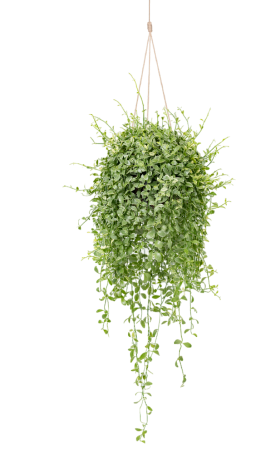Have you heard of AAC?

If you travel the world, you’ll see many different types of homes and architecture. If you’re inquisitive, you’ll even learn about the different building methods used. One building material that hasn’t been widely adopted in the US (yet) is Aerated Autoclaved Concrete, or AAC. (Also called AirCrete, it was patented in 1924 by a Swedish architect and used extensively throughout Europe.) This is probably because other materials, such as wood, are more economical and widely available; also, it takes some training to work with and assemble it properly. AAC has some benefits over wood that, as a homeowner concerned about the long-term health and energy costs of their home, you will want to know about.
First of all, AAC can be produced in blocks, similar to the basic masonry concrete blocks you see used in home foundations and basements, or slabs for use as floors, walls or roofs. AAC is a mixture of portland cement, lime, silica sand or fly ash, water, and aluminum powder. The aluminum reacts with the calcium hydroxide and water to produce hydrogen gas bubbles and expand (like yeast in bread). The blocks are “baked” in huge ovens to release the water and strengthen the blocks. The mix and process makes AAC lighter than traditional concrete, allowing it to be cut with bandsaws and used to frame and insulate a home or office in one step.
Here are some advantages to building with AAC:
-
Air Tightness: There is only 1 “layer” of wall and the blocks can be formed squarely and sealed well to make an “envelope” that does not require a separate air barrier. Therefore, energy savings and air quality can be more simple to achieve in design. According to a Florida builder who uses AAC, this allows for the building to typically use 1 ton less in air conditioner size. “A 2,800-square-foot house will stay cool so long that humidity builds up before the air conditioner kicks on,” Cole says. “So we downsize the air-conditioning by a ton and add a humidistat, so either temperature or humidity kicks the unit on.” (Autoclaved Aerated Concrete (AAC))
-
Thermal mass and insulation: You may be familiar with thermal mass if you ever walk into a concrete building in a warm climate. Concrete, due to its mass, takes longer to heat up than other materials so the interior remains cooler longer, even without interior insulation. In addition, AAC isn’t made up of traditional insulation, say, like an Insulated Concrete Form (ICF) block has layers of styrofoam and concrete. The thousands of tiny air bubbles in AAC act as insulation. This defies the insulation ratings system, however, because the blocks themselves don’t have a high R value, but when included in a building system, the thermal mass and airtightness create a much higher insulative value.
-
AAC is by nature insect (ie. termites, ants and all sorts of insects that destroy wood homes) and rodent-proof, as well as it doesn’t rot. It doesn’t sustain mold if adequate drainage and drying options allow water to shed and dry to one side.
-
AAC is also fireproof so it’s a good option for wildfire-prone areas.
-
AAC has sound insulating qualities that other materials can’t duplicate.
-
All-in-one: as mentioned before, AAC can eliminate several layers that a normal house requires. AAC can be coated with plaster inside, polymer-modified stucco or paint outside, and electrical and plumbing installations in AAC masonry are placed in routed chases.
The downsides to AAC:
-
Because the incorporated air bubbles diminish its compressive strength, AAC building plans specify block dimensions and densities in order to create multiple story buildings.
-
Finding builders experienced with AAC is sometimes difficult. There are also a limited number of suppliers in North America; you can find a list here. Northwest AAC is a reputable builder in the central Oregon/Pacific Northwest area.
-
AAC is somewhat water resistant but over time it can absorb water, so it should be coated or finished with a membrane within a few days. Each manufacturer has its recommended way of waterproofing; for example Hebel has its guidelines here. Even though thick waterproof membranes can be applied, it’s not best suited for basements and below-grade applications because of surface area of AAC concrete will break down quickly when exposed to weather or soil moisture. (A Beginner’s Guide to Autoclaved Aerated Concrete (AAC))
-
Reinforced AAC (RAAC) contains rebar to make it stronger, allowing it to be used in flat roofs and other applications. If RAAC is used as a roof panel, it is subject to water intrusion, which can weaken the concrete and rust the rebar. It must be supported and anchored properly to avoid collapse, as happened in a school in Gravesend, UK. (video)
What about cost? For a builder experienced with using AAC, it only costs about 2.5% more than traditional materials, and this cost is recouped in less than 5 years by energy savings (airtightness and thermal mass work to save energy). For technical information on building with AAC, check out this webpage. We would say that AAC is suited to hot climates, wildfire-prone areas, and even cold climates with additional insulation. We are impressed with the ability to exclude materials (like paper-faced gypsum) that will sustain mold in case of flooding–after all, even homes in high elevations can have major water leak events that require extensive restoration. What if you could remove water from the floors, dry out the walls and get back into your home within a week instead of months, as well as avoid hidden mold issues? Now that is something worth investigating.
Photo by Ricardo Gomez Angel on Unsplash






